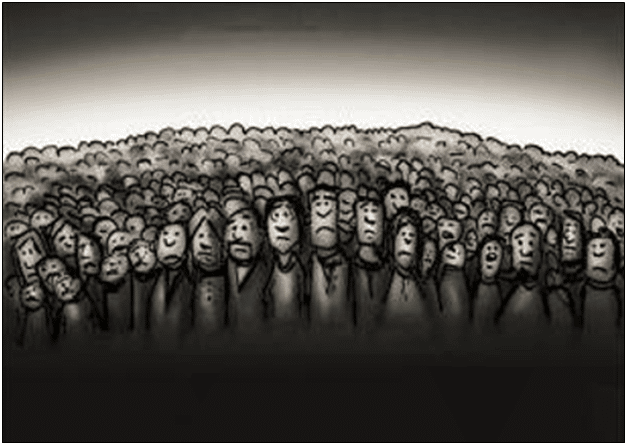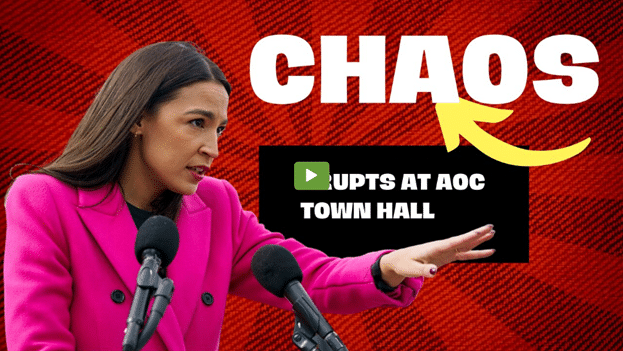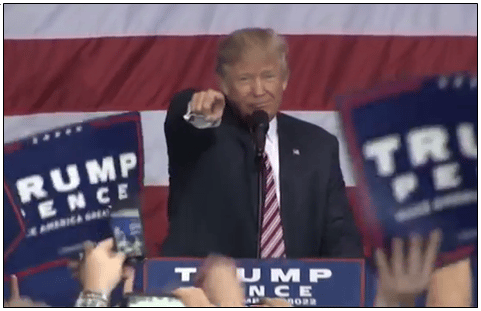June 2, 2023
Permission to republish original opeds and cartoons granted.
Unemployment rate ticks up to 3.7 percent in May as job openings swell back to 10.1 million
By Robert Romano
The unemployment rate has ticked up off of historic lows to 3.7 percent in May, as 310,000 fewer Americans reported having jobs and those saying they were unemployed increased by 440,000, the latest data by the Bureau of Labor Statistics shows.
That’s still pretty low by historic standards, but nothing lasts forever. Following periods of peak employment and high inflation, the economy can tend to overheat, consumer spending slows down and on a periodic basis, recessions occur, resulting in jumps in unemployment. The questions include when and to what extent that upheaval in labor markets will be.
Similar drops in the household survey reports of employment were felt in 2022, with257,000 and 66,000 fewer Americans reported having jobs in the BLS household survey in Oct. 2022 and Nov. 2022, respectively, offset by gains through the first half of 2023—until now. There were also dips of 346,000 in April 2022 and 242,000 in June 2022 that were offset by gains in May 2022 and July 2022.
Which, is usually what happens during peak employment, where the unemployment rate really cannot go much lower, and so the level of employment begins clanking around the top, often followed by a drop that is significant. For example, by 2024, the White House Office of Management and Budget (OMB) has projected that the unemployment rate will rise to about 4.6 percent. That’s an implied 2 million jobs lost or so, and much of it remains on the horizon.
On inflation, which peaked at 9.1 percent in June 2022 and was down to 5 percent in March. Usually peak inflation followed by a slowdown in the increase in prices also precedes a downturn. As it continues to normalize, watch for more upheaval in labor markets.
In the meantime, job openings measured by the Bureau of Labor Statistics increased by 358,000 to 10.1 million. That’s still more than 15.9 percent below the 12 million peak in March 2022. Although a recent addition to the BLS plethora of data, job openings in the past three recessions have tended to dip significantly.
But as the number of Americans retiring has steadily increased over the past decade, so have the number of job openings. Americans not in the labor force 65 years old and older has increased 3.27 million since Feb. 2020, from 28.3 million to 31.4 million today. In Jan. 2009 it was just 20.1 million. That’s the Baby Boomer retirement wave, coupled with comparatively lower fertility rates as more women entered the workforce in subsequent generations — and it continues to have massive ripple effects throughout the economy.
The question is whether those job openings will be enough to forestall job losses in labor markets indefinitely or at least through a period that would have otherwise resulted in the unemployment rate steadily ticking upward.
The situation could be similar to that of Japan whose demographic decline the past few decades with a rapidly aging population followed very low fertility rates. During the financial crisis and Great Recession of 2008 and 2009, the unemployment rate only reached 5.7 percent (here it reached 10 percent in Oct. 2009), and just 3.2 percent during the Covid recession.
There is also the spread between 10-year treasuries and 2-year treasuries, an inversion of which usually predicts a recession on the horizon as long term growth is perceived to be lower than short term growth. The 10-year, 2-year inverted briefly in March 2022 and then succumbed fully in July 2022, where it has remained. Usually, as the economy turns into a recession, the yield curve will tend to uninvert itself as the Federal Reserve ramps up purchases of treasuries and drops interest rates. The Fed hasn’t done that yet, after hiking interest rates for the past year, and may not until inflation returns to more normal levels.
Other troubling signals include the recent regional bank failures: First Republic Bank, Silicon Valley Bank and Signature Bank all were placed into FDIC receivership in the past few months—the second, third and fourth largest bank failures in American history.
These have come as interest rates have risen by the Federal Reserve and private banks to combat sticky inflation in the U.S., thereby lowering the book value of trillions of dollars of U.S. treasuries that banks and other financial institutions hold onto. There could be as much as $620 billion of unrealized losses sitting on bank balance sheets.
Overall, the SPDR S&P Regional Banking ETF is down 38 percent since February. Shares of PacWest have collapsed nearly 76 percent since February, Western Alliance Bancgroup by 56 percent and Zions Bancorpation by 49.4 percent. Similar drops in the stock values of First Republic, Silicon Valley and Signature banks signaled their ends too, and could point to more financial stress on the horizon.
These are all things that tend to happen during recessions. They might be offset to some degree by the spare labor markets we are currently experiencing, with millions of job openings even as the economy is slowing down. That could spare the American people from the worst of what would otherwise be a steep increase in unemployment. Time will tell.
Robert Romano is the Vice President of Public Policy at Americans for Limited Government Foundation.
To view online: https://dailytorch.com/2023/06/unemployment-rate-ticks-up-to-3-7-percent-in-may-as-job-openings-swell-back-to-10-1-million/
Video: Queens town hall hosted by Rep. Alexandria Ocasio-Cortez descended into chaos
To view online: https://rumble.com/v2ridxd-queens-town-hall-hosted-by-rep.-alexandria-ocasio-cortez-descended-into-cha.html
Populism, Conservativism and Trump. Has Trump Redefined What It means to be a True Conservative?
By Manzanita Miller
Former President Trump has no doubt altered the Republican Party since he entered the political arena in 2015, but he has also given rise to a new form of conservative populism that has yet to be captured entirely by polls and political analysts.
Michael Tesler, a professor of political science at University of California, Irvine, recently made the case in a Five Thirty Eight article that former President Trump has redefined what it means to be a conservative, and that the label now essentially means, “pro-Trump” and little else.
Tesler goes over a dearth of polling data showing that since Trump’s unexpected entry into the political sphere in 2015 and even more unexpected victory, the way the term conservative is used has changed.
Early in Trump’s political career, he was largely rejected by the Republican political class, and particularly by those who identified as conservatives. In his article for Five Thirty Eight, Tesler references a 2015 edition of National Review which was published just ahead of the GOP primaries with a stark anti-Trump message. The magazine published a series of letters from influential conservatives arguing that Trump’s campaign was “a menace to conservatism”. Trump was largely portrayed as an outsider, inexperienced, and a threat to the delicately ordered set of priorities that defined conservatism in the immediately post-Obama era.
Tesler outlines the fact that in a 2016 Quinnipiac poll, just 27% of GOP leaning voters who identified as “very conservative” said they supported the president, while the most recent Quinnipiac poll shows a full 61% of “very conservative” voters support Trump, an increase of 34 percentage points compared to 2016.
The argument that the term conservative has shifted to mean pro-Trump is an interesting one, but it is also possible that the term conservative is simply becoming less relevant overall. The reality is Trump is more of a populist; however, most Americans aren’t self-identifying as populists.
Only in certain highly active political circles are a few more pioneering political minds adorning themselves with the populist label. The term is largely relegated to the worlds of political analysis and academia – not to voters’ view of themselves. Not only that, but pollsters rarely if ever add the option of populist as an ideological label on surveys. Most surveys simply ask whether a voter is a liberal, moderate or conservative, occasionally adding options for ‘very liberal’ and so forth.
However, this does not render the concept of populism any less relevant to capture political sentiment and the shift toward a more inward-focused set of national priorities compared to previous time periods.
When ideological conservatism is left off the table and GOP primary voters and those who lean Republican are asked whether they believe it is important to “restore the policies of the Trump Administration”, a vast majority say it is. A late March CNN/SSRS poll shows that GOP primary voters say 85% to 15% that it is important to restore Trump-Administration policies. Female GOP primary voters (86%), voters with income under $50,000 (87%) and white-non-college voters (91%) say restoring Trump-era policies are important at the highest rates.
The same poll shows that opposing foreign-intervention, one of the stances Trump has been criticized for most by more conventional conservatives, is extremely important to GOP primary voters. Voters say 80% to 20% that it is important the GOP-primary pick opposes U.S. involvement in the Russia-Ukraine conflict, and women (87%) and young people (83%) hold these views at the highest rates.
These findings come at a time when a significant anti-war sentiment is prevailing among the public, particularly on the right. Recent polling reveals that more than half of Americans oppose providing weapons to Ukraine, and support for continued weapon supply has dropped from 60% in May 2022 to under half (48%) in February of this year.
Furthermore, nearly three-quarters of Americans believe that the U.S. should have either a minor role (49%) or no role at all (24%) in the Russia-Ukraine conflict. Only 26% of respondents advocate for a major U.S. role. It's worth noting that a higher proportion of Democrats (40%) than Republicans (17%) support a major U.S. role, although both figures have decreased compared to previous polls.
Polls already indicate a shift in public sentiment on immigration, as a plurality of Americans now call for a reduction in immigration for the first time in decades. Gallup polling reveals that two-thirds (63%) of Americans express dissatisfaction with immigration, the highest percentage in over ten years. Notably, the dissatisfied group is primarily driven by those who desire decreased immigration levels, constituting 40% of Americans. In contrast, only 8% wish to expand immigration. The proportion of Americans seeking decreased immigration has more than doubled in just two years, rising from 19% in early 2021 to the current 40%.
What this boils down to going forward is somewhat intuitive, but no less important for attempting to accurately identify political shifts. The post-Obama era of conservatism in 2015 was a distinctly different form compared to the Trump-era conservatism.
Trump awoke a blend of conservative populism, defined by socially conservative values combined with anti-foreign intervention and a desire to secure the border and focus on an inward set of priorities. Some of these stances can be found in pre-Trump conservatism. For instance, pro-life issues were always important to GOP voters and are a growing aspect of modern conservatism. But other stances – like strongly opposing foreign intervention – are new territory for the status quo Republican Party and using the label “conservative” to define them doesn’t entirely fit.
Manzanita Miller is an associate analyst at Americans for Limited Government Foundation.
To view online: https://dailytorch.com/2023/06/populism-conservativism-and-trump-has-trump-redefined-what-it-means-to-be-a-true-conservative/


10 Reasons Why EPA’s New EV Regs Weaken America, Strengthen China
By Diana Furchtgott-Roth
New proposed regulations on automobile emissions from the Environmental Protection Agency would require new car sales to be 60% electric by 2030 and 67% by 2032, compared to fewer than 6% in 2022. EPA is also planning new rules for power plants, driving up the costs of the electricity needed to charge these vehicles. These rules would raise driving costs for Americans and strengthen China’s economy, because China makes 80% of the world’s electric batteries.
Here are 10 reasons why EPA should not proceed with the rule.
New electric vehicles cost more than gasoline-powered vehicles. The electric version of the base version of the Ford 150 pickup truck, the best-selling vehicle in America, costs an additional $10,000. Tesla’s base prices start at $39,000 for a Model 3 and go up to almost $100,000 for a Model X.
Charging will cost more. At the same time the EPA is issuing new rules for automobile emissions, it’s also planning new rules for emissions from power plants, The New York Times reports. According to the Times, EPA will regulate carbon emissions from both new and existing natural gas and coal-fired power plants, and require carbon capture systems or a switch to hydrogen fuels.
It won’t be cheap. These systems for capturing carbon are costly and will be passed on to consumers in the form of higher electricity rates. Drivers will find it more expensive to use electricity for all purposes, including charging their electric vehicles.
PROMOTED
Used electric vehicles will be hard to find. Three-quarters of vehicles sold are previously owned. In 2019, the last year for which complete data on used car sales is available, 41 million used cars were sold and 13 million new cars. But people don’t want to buy used electric vehicles, because it’s difficult to evaluate how long the battery will last. Replacing an EV battery can cost $10,000 to $15,000.
Mandating electric vehicles would reduce Americans’ standard of living. Back in the early 1900s, when Henry Ford started producing cars, only rich Americans could afford them. Throughout the 20th century, however, cars became less expensive, and soon many households could afford not one but two. Yet cars are already becoming more expensive, and the proposed rule accelerates that trend, taking America back a century, where new cars will be only for the rich.
Electric vehicles take 45 minutes to recharge. Recharging an electric vehicle can take 45 minutes, compared to 5 minutes to fill up with gas. If someone is in front of you at the charging station, the wait can double. Most people don’t want to let their EV battery go below 20%, and the charging rate goes down when it is charged over 80%. In most large cities, such as New York City, many do not have access to indoor garages for overnight charging. Using charging stations on the street, if available, risks theft of expensive charging cables.
Battery-powered vehicles lack sufficient range to satisfy most customers. Although 60 to 70 miles of range is enough for most trips, people buy cars for all circumstances, including vacations and cold weather. Batteries lose 20% to 40% of their range in cold climates. That’s one reason only 380 North Dakota residents chose EVs in 2021 and Alaska had 1,300.
Yet the Department of Transportation plans to spend $26 million for charging stations in North Dakota, or $68,000 per registered EV. Alaska, with $52 million allocated for charging stations, will get $40,000 per EV.
Electric vehicles harm the environment through mining for minerals. Minerals such as lithium and cobalt are essential for batteries. Mining for these minerals is energy-intensive, and the Chinese Communist Party (CCP) has facilitated access to domestic and foreign minerals for battery production. Lithium is mined in western China’s Qinghai Province, aided by government funding, and China purchases cobalt for electric batteries from Kisanfu, in the Democratic Republic of Congo.
Electric vehicles are not emissions free. In addition to batteries made with fossil fuels, increased electricity demand places additional stress on the electrical grid, as California has found out from rolling blackouts. In its proposal, the EPA discusses the benefits of reducing pollutants from cars, but higher emissions will come from the electricity generated to recharge the cars. This electricity is made with natural gas and coal, because wind and solar powers a small share of America’s power. The EPA admits that “We expect that in some areas, increased electricity generation would increase ambient SO2, PM 2.5 , ozone, or some air toxics.”
Electric vehicles will make America weaker and China stronger. Rather than using its own oil and natural gas resources, America will depend on batteries from China, which makes 80% of the world’s batteries. America should not rely on China, a totalitarian regime which uses forced labor and coal-fired power plants, for a vital element of transportation.
No effect on climate. This mandate of a ten-fold increase in sales of electric vehicles would affect Americans and manufacturers with negligible results for the climate because China has not committed to reducing emissions until 2027. In fact, China continues to build coal-fired power plants. Consider that America has 225 coal-fired power plants, and China has 1,118 (half of all the coal-fired plants in the world).
China has increased carbon emissions by over 5,000 million metric tons over the past 16 years. In contrast, America’s carbon emissions have declined by over 1,000 million metric tons over the same period due to the use of clean natural gas.
New EPA regulations, driven more by politics and virtue-signaling than economics and emissions reductions, will raise vehicle costs for Americans, give up energy independence to China, and have no environmental benefits. The Biden administration should withdraw its proposal.
To view online: https://www.forbes.com/sites/dianafurchtgott-roth/2023/05/01/10-reasons-why-epas-new-ev-regs-weaken-america-strengthen-china/?sh=36bfc0af720c



